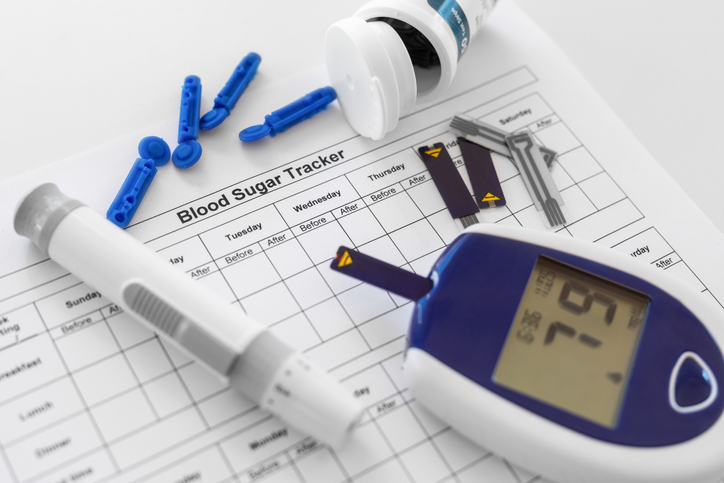Commitment + Clinical Leadership = Better Outcomes

13 Facts About Diabetes
Diabetes affects over 37 million people
According to the Centers for Disease Control and Prevention, diabetes affects more than 37 million people in the United States. 1 in 5 people are unaware that they have the condition.1
There are key symptoms of diabetes
There are a few key symptoms of type 1 and type 2 diabetes, however, oftentimes people may not experience any of these at all. Symptoms of diabetes include hunger, thirst, tiredness, frequent urination, and unexpected weight loss.2
Type 2 diabetes is the most common type
It is estimated that 90-95% of cases of diabetes are type 2.3 People with type 2 diabetes are unable to regulate their glucose levels, which results in too much sugar in the bloodstream. This can put people with type 2 diabetes at risk for nervous and circulatory system disorders.4
The total medical cost Americans as a whole spend on diabetes has risen 26%
Another fact about diabetes is the total cost Americans spend on this health condition has risen 26% over 5 years. In 2012, the cost was $245 billion, and in 2017 the cost rose to $327 billion. They found that people who have diabetes spend an average of $16,752 each year on medical costs, with $9,601 of the costs being directly related to diabetes.5
1 in 3 American adults have prediabetes
Prediabetes is when someone has high blood sugar, but it’s not high enough to be diagnosed diabetes. It is estimated 96 million adults have prediabetes, which is roughly 1 in 3 people. More than 80% of people are unaware they have prediabetes.6
Genetic history alone isn’t enough to get diabetes
While people with diabetes will have a gene that predisposes them to the condition, they also need something in the environment to trigger their diabetes. In identical twins, it was found that if one twin had type 1 diabetes, the other would get it half the time. For type 2 diabetes, if an identical twin had it, the risk is 3 in 4 for the other twin to get it.7
Diabetes can happen at any age
The risk for diabetes can happen at any age. Type 1 diabetes is typically diagnosed in children and teenagers. Type 2 diabetes is more common in people over 40.8
People who get gestational diabetes don’t have any symptoms
Gestational diabetes, which occurs in women who are pregnant and never had diabetes, has no symptoms. Most medical professionals will discover their patient has gestational diabetes after a blood sugar test or an oral glucose test.9
Diabetes can be managed with a care plan
If you are diagnosed with diabetes, your doctor will prescribe a care plan to help you manage your glucose levels. Insulin could be prescribed to help you manage your condition. A healthy diet and an active lifestyle are also important to managing diabetes.
There are organizations that help people with diabetes
There are organizations dedicated to helping those with diabetes by educating people about the condition and funding research. Some of them include The American Diabetes Association, Juvenile Diabetes Research Foundation International, and Joslin Diabetes Center.
In the last 20 years, the number of people diagnosed with diabetes has doubled
Over the past 20 years, the number of people with diabetes has doubled due to obesity.1 A recent study has also found that the number of adults diagnosed with type 1 diabetes is projected to double by more than 17 million by 2024.10
Diabetes affects 4.6 to 9.2% of pregnant women
It is estimated that 4.6 to 9.2% of pregnant women are affected by gestational diabetes. Another fact about diabetes is in 10% of these cases, the woman will be diagnosed with type 2 diabetes after her pregnancy. The rest of the women in these cases will have a 35-60% chance of developing type 2 diabetes in the next 10-20 years.11
People with type 2 diabetes will often develop non-fatty liver disease
One interesting fact about diabetes is its correlation with non-fatty liver disease. Studies have found an association between type 2 diabetes and non-fatty liver disease, with each condition being a prediction of the other. In fact, the prevalence of non-fatty liver disease from ultrasounds is estimated to be around 70% of people with type 2 diabetes.12
Learn More About Diabetes Today
If you or a loved one has been recently diagnosed with diabetes, know that you’re not alone. There are many resources and healthcare providers who will be able to educate to help you understand your condition. For more information on diabetes, check out the American Diabetes Association.
Saber Healthcare is an organization dedicated to providing consultant services to long-term care providers. This article is for informational purposes and is not meant to be seen as professional advice. Please consult with a medical expert before relying on the information provided.
Sources
- https://www.cdc.gov/diabetes/about/?CDC_AAref_Val=https://www.cdc.gov/diabetes/basics/quick-facts.html
- https://www.aace.com/disease-and-conditions/diabetes/what-you-need-know-about-diabetes
- https://www.cdc.gov/diabetes/about/?CDC_AAref_Val=https://www.cdc.gov/diabetes/basics/diabetes.html
- https://www.mayoclinic.org/diseases-conditions/type-2-diabetes/symptoms-causes/syc-20351193
- https://diabetes.org/about-us/statistics/cost-diabetes
- https://www.cdc.gov/diabetes/prevention-type-2/prediabetes-prevent-type-2.html?CDC_AAref_Val=https://www.cdc.gov/diabetes/basics/prediabetes.html
- https://diabetes.org/diabetes/genetics-diabetes
- https://www.mayoclinic.org/diseases-conditions/diabetes/symptoms-causes/syc-20371444
- https://www.healthline.com/health/diabetes
- https://www.everydayhealth.com/type-1-diabetes/type-1-diabetes-cases-set-to-double-worldwide-by-2040/
- https://www.healthline.com/health/type-2-diabetes/statistics
- https://doi.org/10.1210/er.2012-1009
